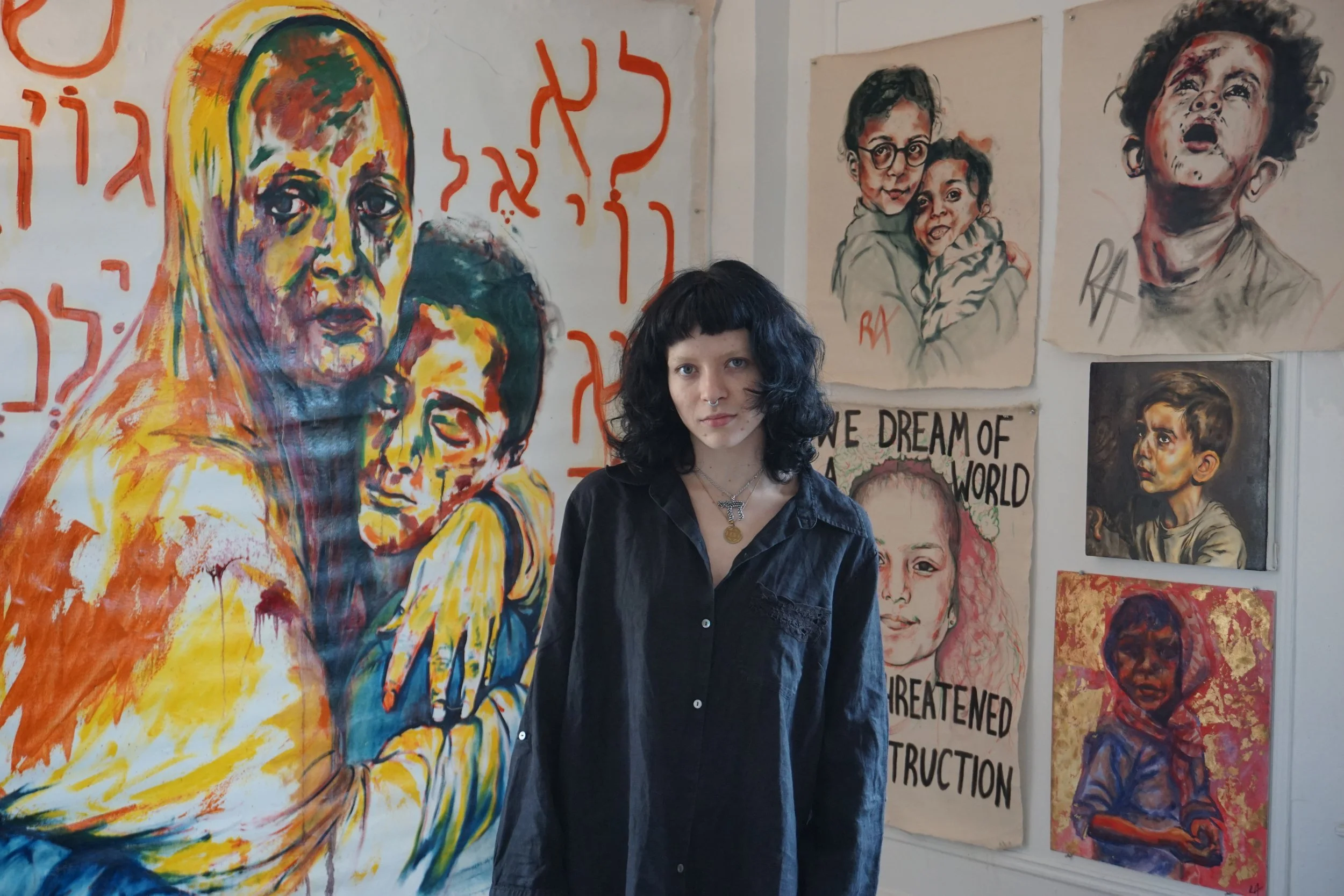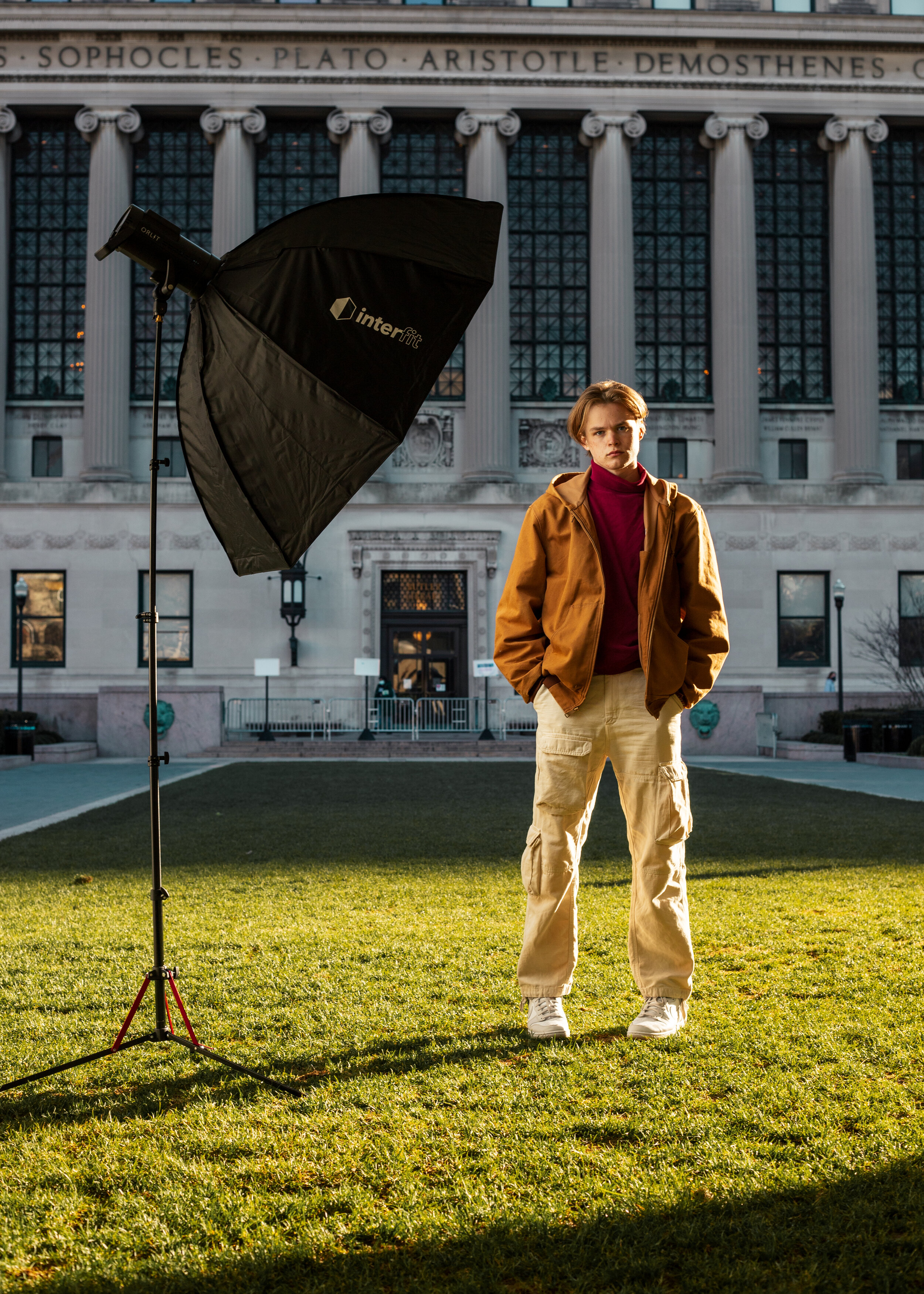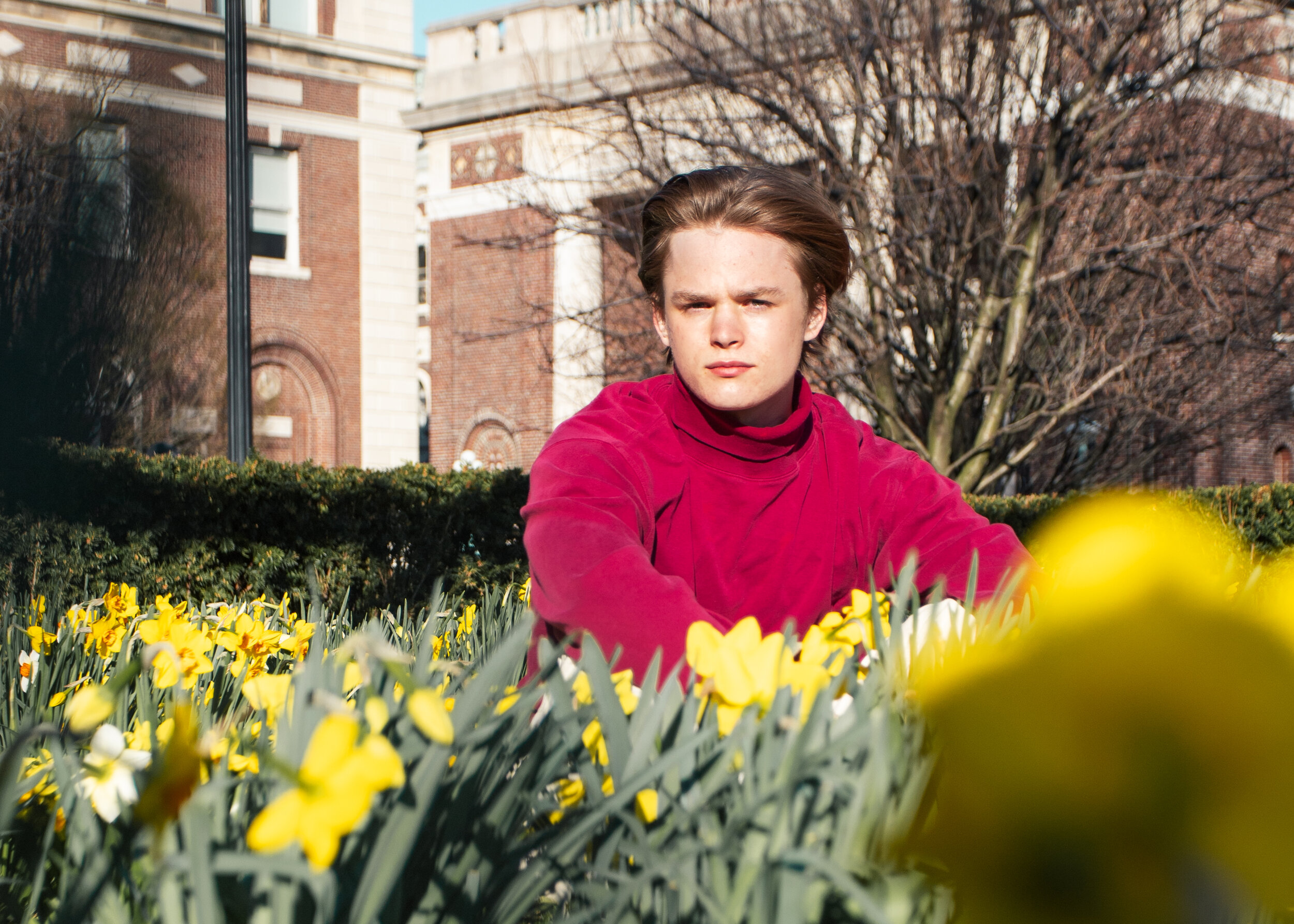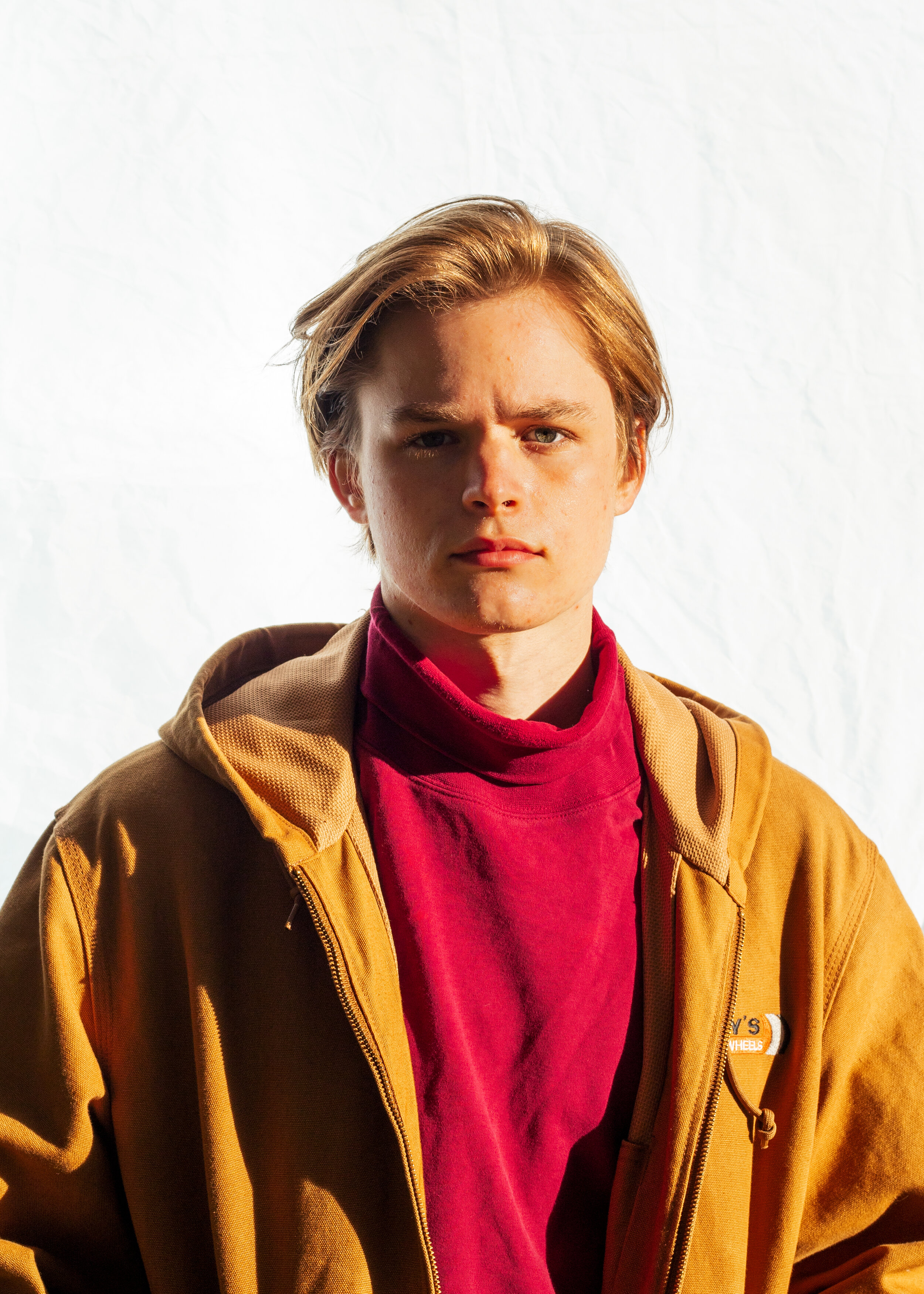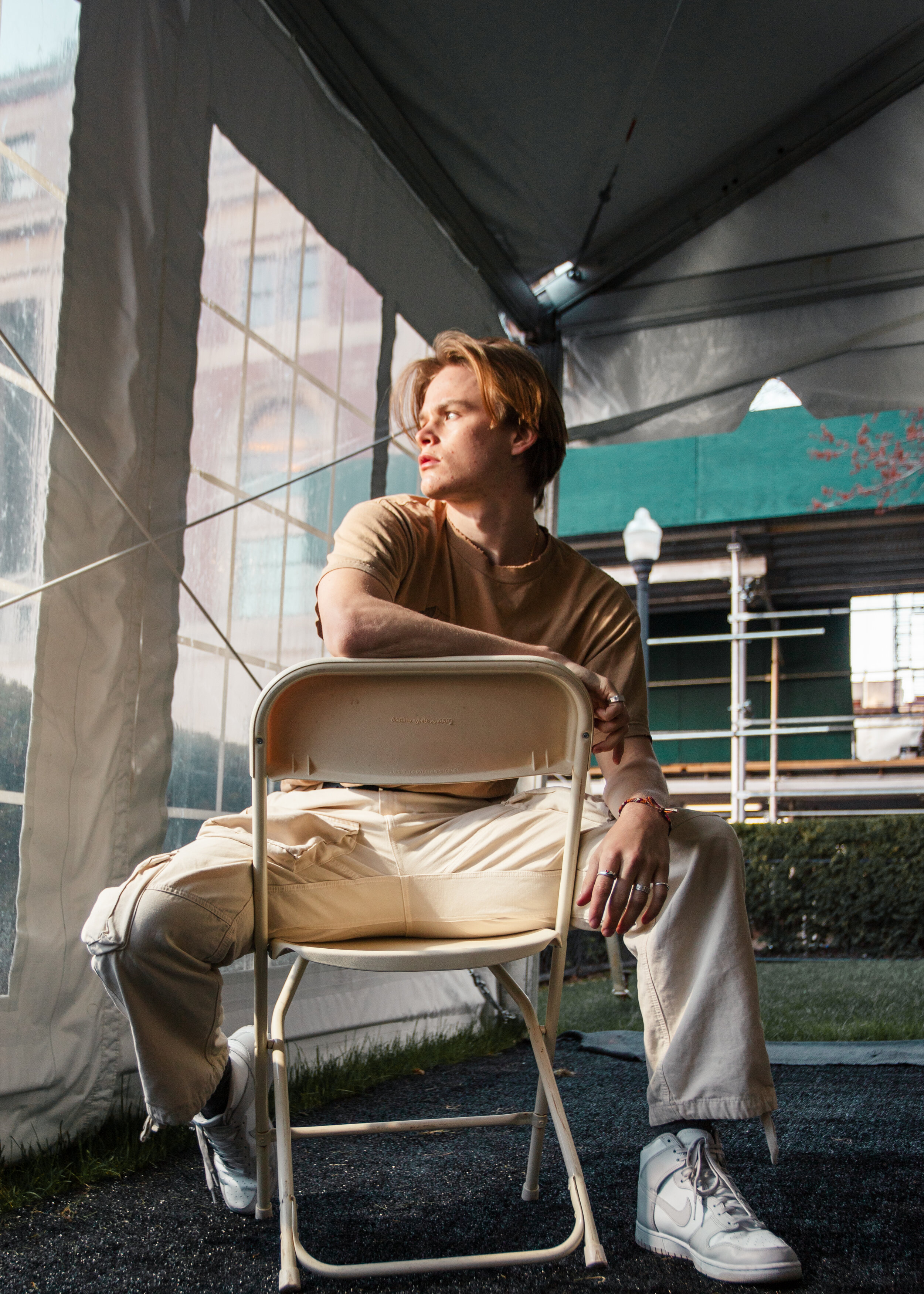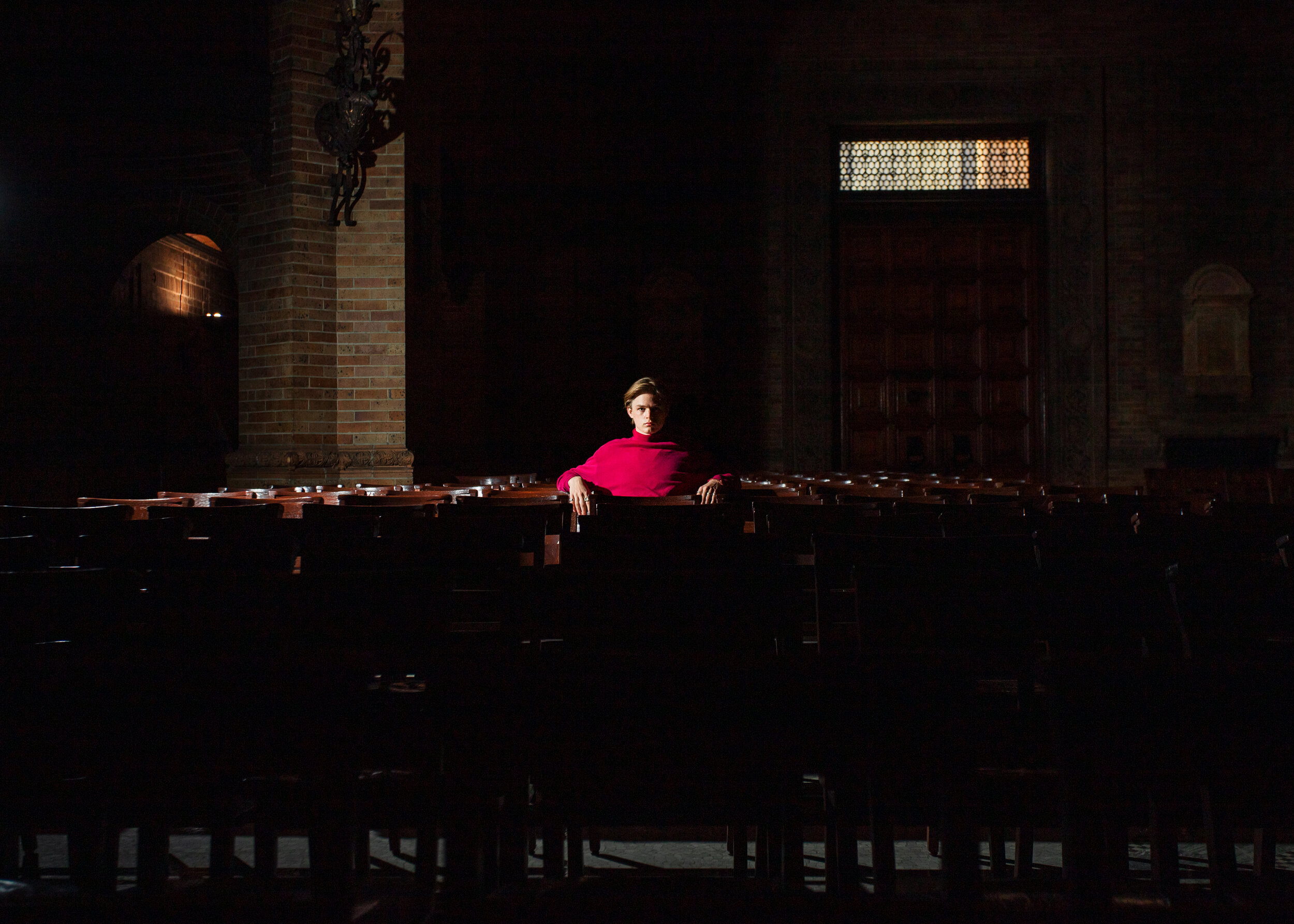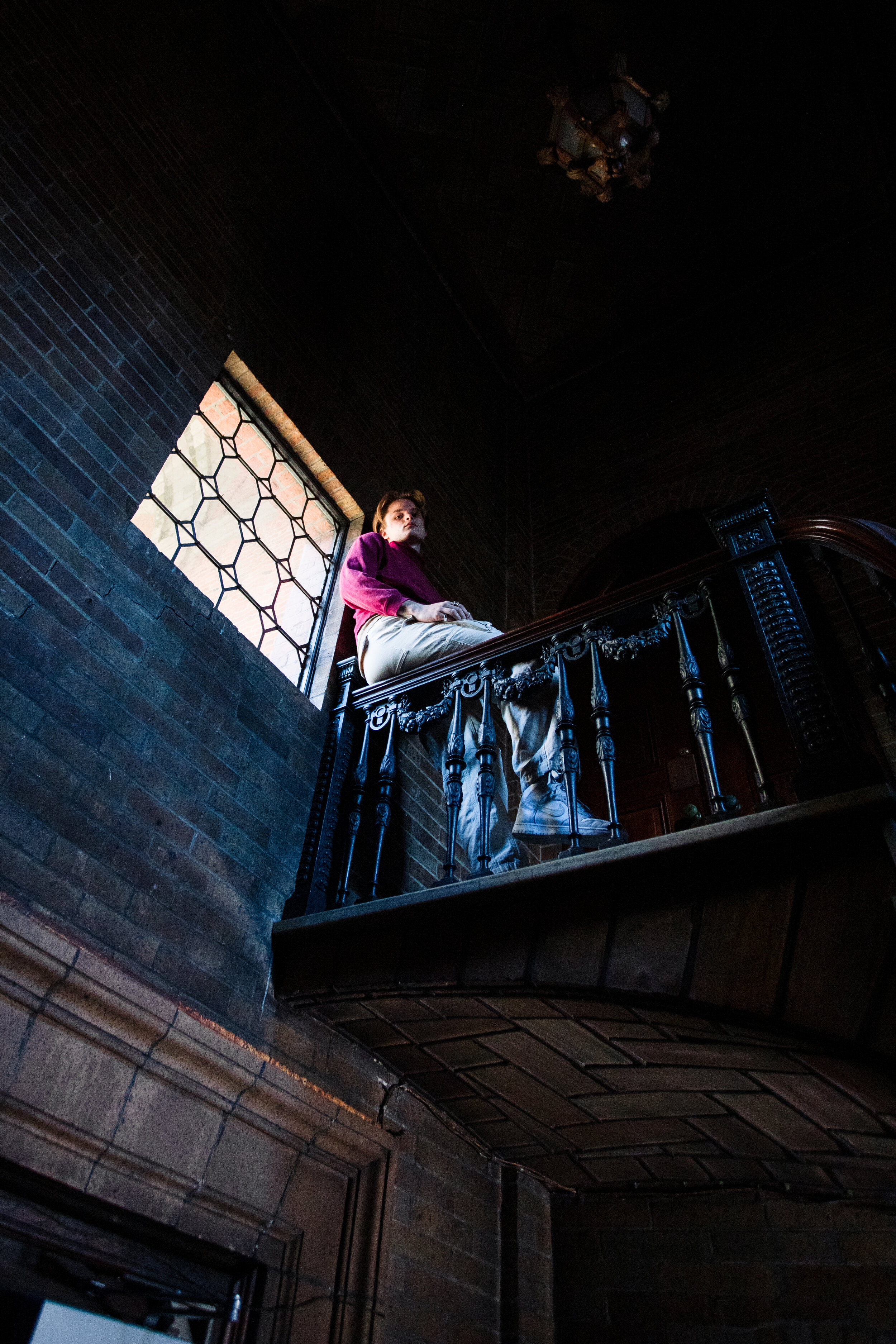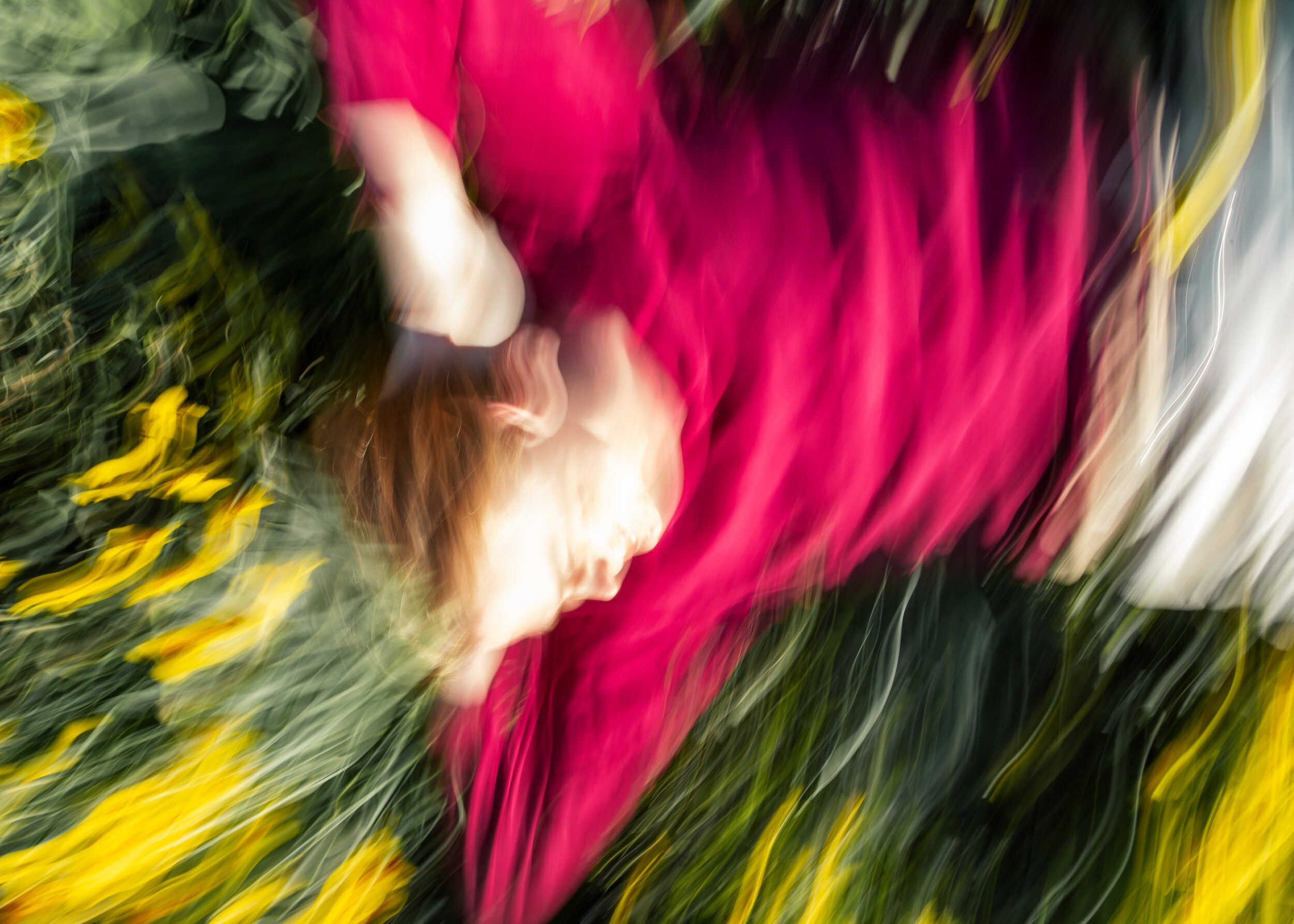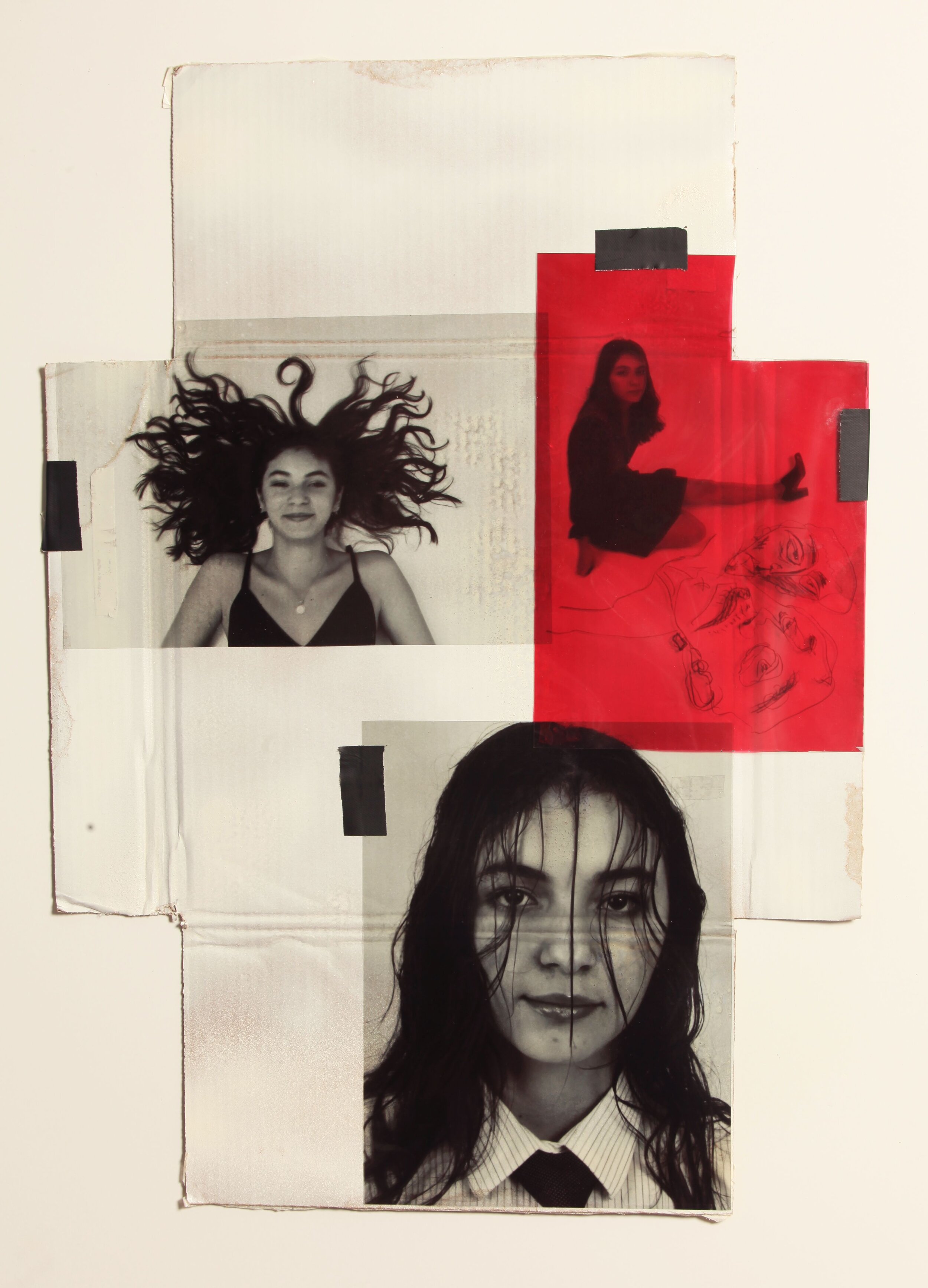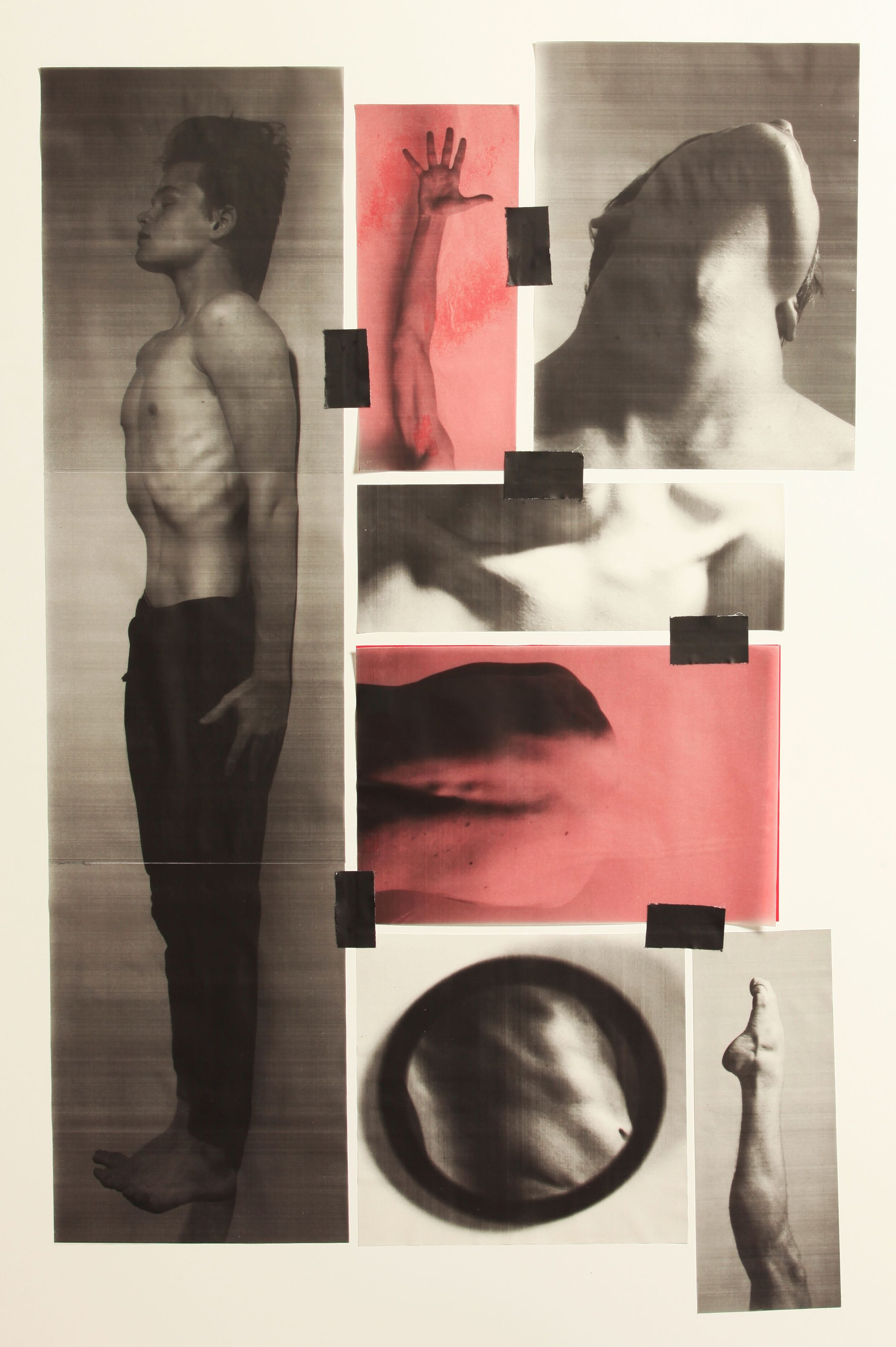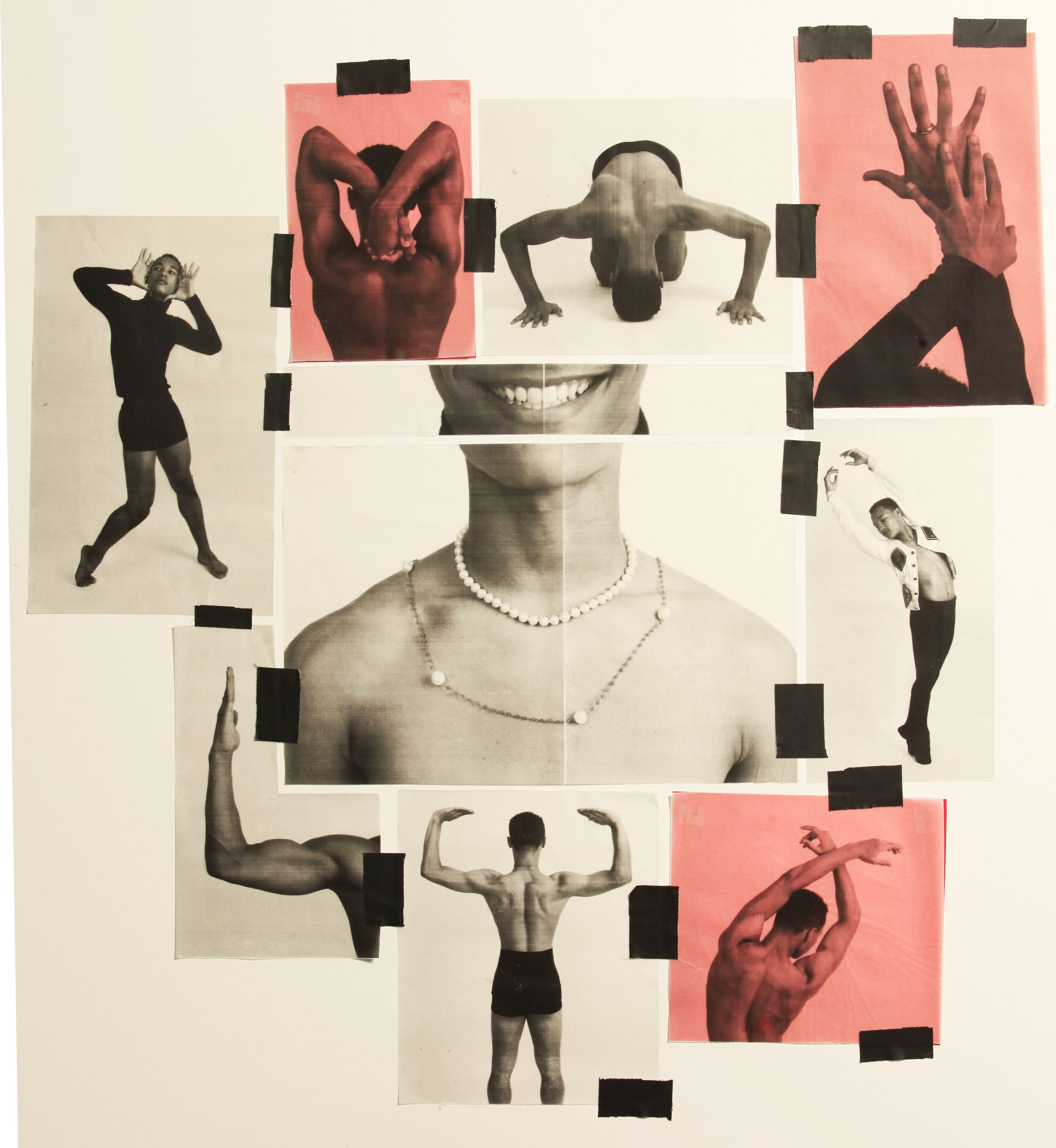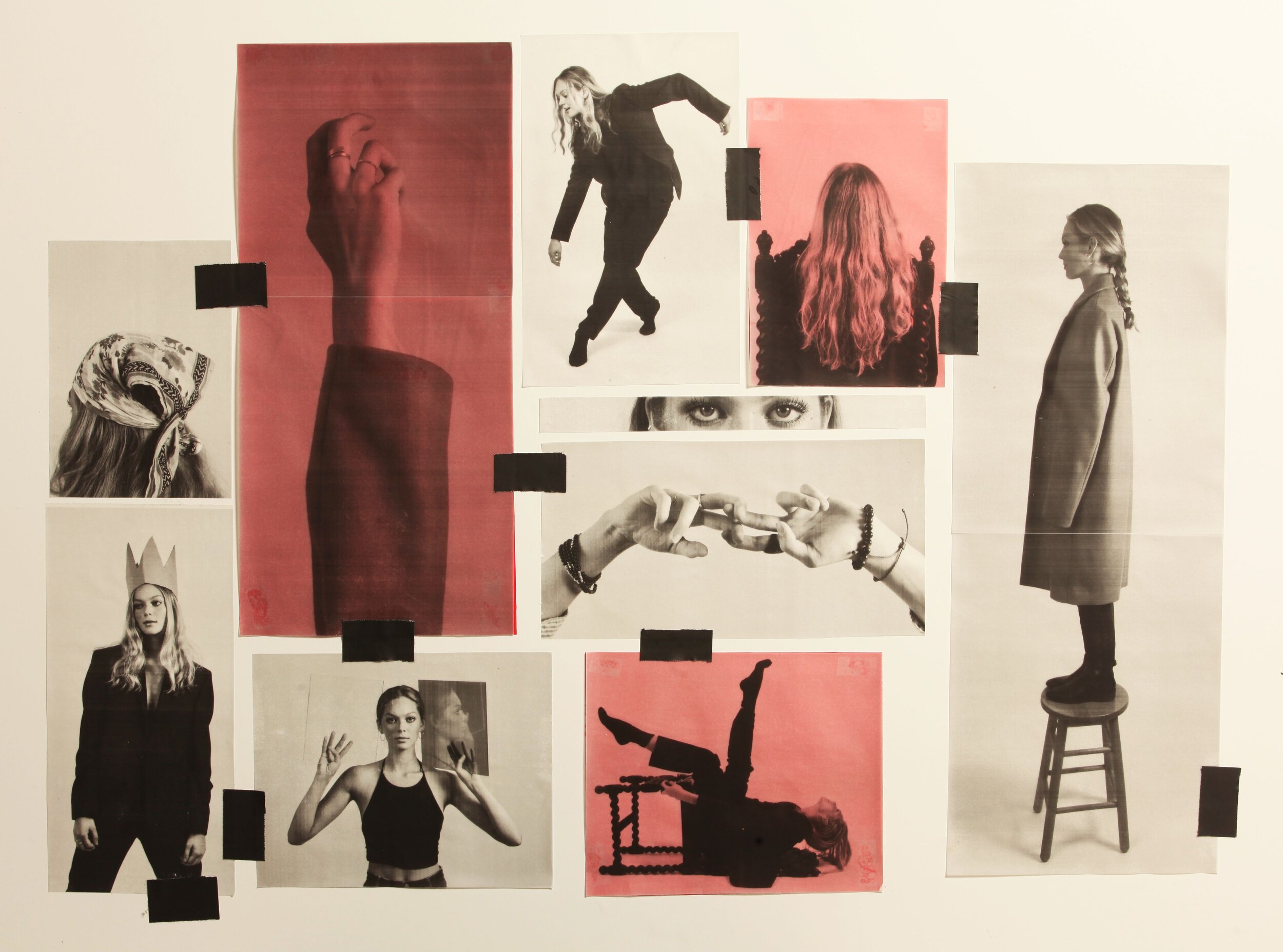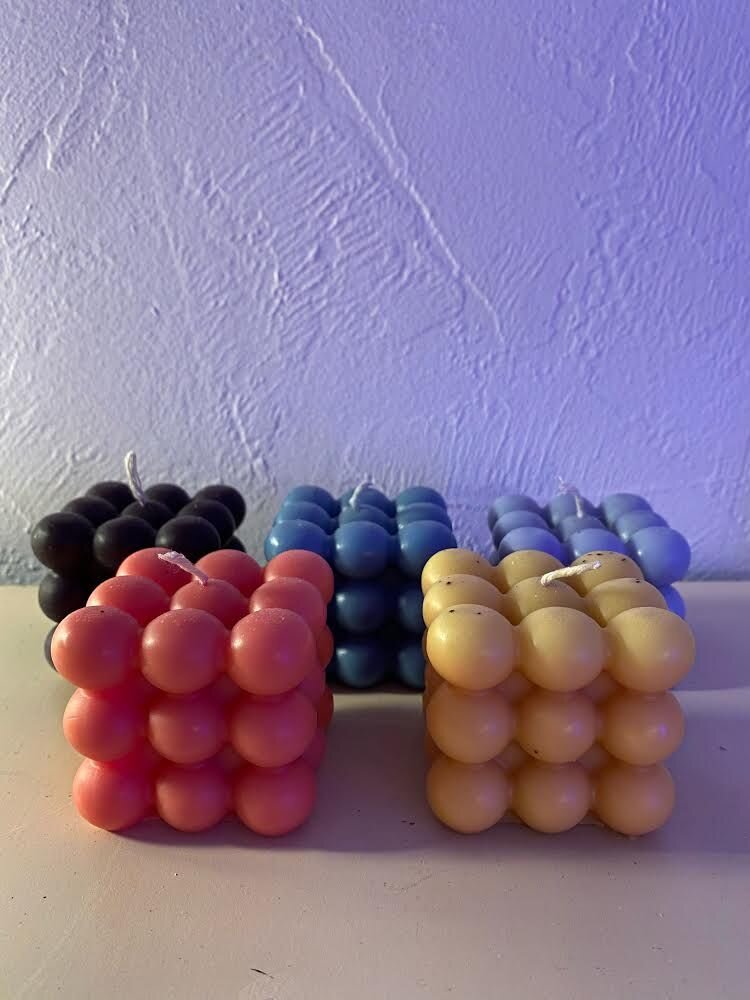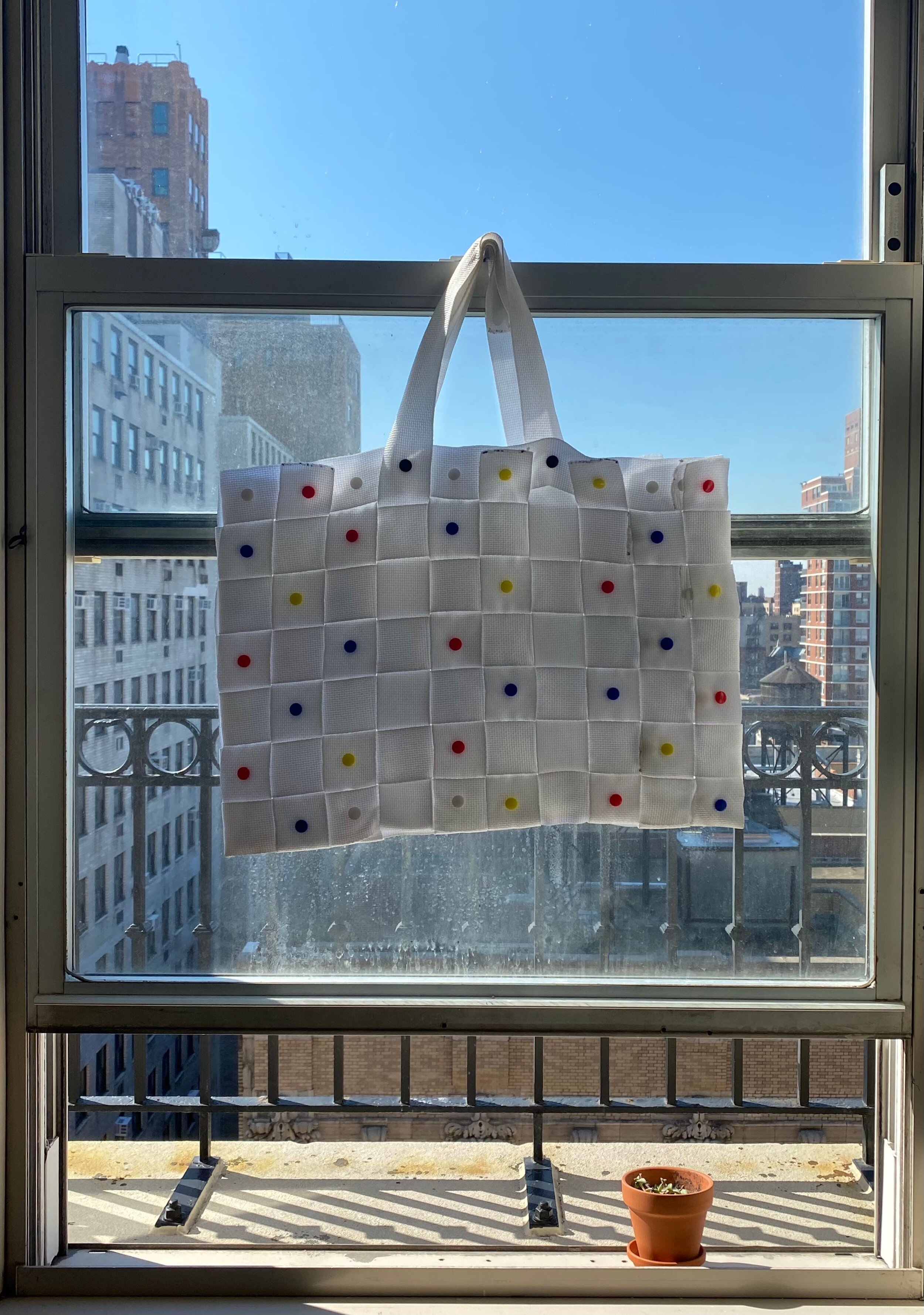Feature by Raunak Lally
Photos by Rommel Nunez
Go ahead and introduce yourself.
I'm Nicolas. I am an artist at Columbia College studying Computer Science and Mathematics.
Where are you from and how have you found your Columbia experience so far?
I'm from the Boca Raton area in Florida and I have a 14-year background in pre-professional ballet. I've also been really interested in visual arts, sculpture, and photography, and sort of the intersection of where all those mediums lie. I definitely have an interest in the human body and form and how to integrate that with aspects of technology––as I said, I’m interested in Computer Science and things along those lines. I've really enjoyed the Columbia community so far. I was here on campus all year, so I really got a pretty interesting look into how the community functions, especially at this time.
Did you manage to get involved in any student organizations or clubs on campus?
Yeah! I'm part of the entrepreneurial space on campus, I'm a board member of CORE, I've sort of been pushing arts entrepreneurship activities; the main argument I've been making is that artists are, in many ways, entrepreneurs––they use the same tools, they have the same self-starting mentality, the playful idealism, and the spirit to create. There’s a natural connection between art and entrepreneurship, as tenuous as that may be.
That's a really cool connection! Speaking of starting things up, what got you into dancing in the first place, and what are some of the highlights of your 14 years of dancing?
Well, I actually trained to become Billy Elliot, the main character in the Broadway show of the same name, and I was doing that when I was around six or eight years old. The auditions have a very strict height requirement because they want kids to look young throughout their entire three years on Broadway, so when I actually auditioned after two years of training––I learned dance and I had studied all of the musical compositions and the singing, the tap-dancing––I was too tall for the role and I wasn't able to audition the way I liked. What was kind of nice about that is that, through that experience, I gained an appreciation for contemporary modern ballet, and I really fell in love with dance in a way that I wasn't expecting. I stuck with that for the next few years until I found other forms of art, and I looked into creating art and photography and all these other aspects with the dance that I love.
Would you say that dancing is how you got into exploring your creativity through different mediums?
Yeah, I definitely started with dance and it branched out into different other mediums, but always through the lens of dance, which informs all of my work now.
What would you say are the most common threads between all of your current work and dance? What are some major themes you see?
I definitely have an interest in movement. I'd say movement, human and natural forms, are aspects of temporality. A lot of my work is focused on the difference between dance and these other art forms, and seeks to create and establish a connection. I have one piece called Ephemeralities, and the focus of that piece was to examine, through a critical lens, what dance and photography have in common but also how they diverge. In that piece, I took stills of a moving dance performance with the idea that I would show that dance is something ephemeral and can only be experienced in the moment, and that's what makes it have the grit that you can only experience in person.
Ephemeralities
But then photography seems to do the exact opposite; in photography, it takes a moment away in time ––I think it was Roland Barthes who talked about that a lot in Camera Lucida. Photography takes a moment out of its context in time and place and presents a still. It’s like some version of time travel. It takes a moment, snaps it, and then presents it devoid of that temporal context. Dance is something that can only really be experienced in person, ephemerally, in the moment, the performance aspect brings a lot to it: the tension between the viewer and the performer. Photography, on the other hand, is like something that separates a moment from time; it's anti-ephemeral. I was trying to salvage a connection between them, so I took a snapshot of the dance performance and lined them up as a composition. I highlighted areas where dance and photography intersected and called them poses, because, if you think about it, a pose in dance is trying to isolate a certain position or a certain pose in time, in the same way that photography isolates an image in time.
That's a really cool way of describing how you translate these movements into these stills. In some of your pieces, like Composition 7N and Composition 10S, are those found images, or did you take those yourself?
All of my pictures are taken.
That's great. What were some of the sort of movements you were trying to highlight in the Composition pieces? Was there a specific theme of movement?
I can talk about that a little bit. The Composition series started as a scientific inquiry. I was looking to replicate the same aspects of the scientific process, or what I thought was interesting in surveys or statistical experiments, by following the subject of a photograph in the actual process of creation. There's sort of a history of photography of exploiting the subject; the photographer can be completely separate from the subject and still profit off of their image. I thought it would be interesting to instead, identify an interest group, which were artists around my own age in my school, and people I had known from my local area, and to involve them in the creative process of the photographs in a way that created defined roles for each of us; being the leader and participant of the experiment.
So for all of the people in the Composition series, each Composition corresponded to a single individual. I invited them to the studio, asked them to list all of their favorite things about themselves. My goal of the test, the sample, the experiment, was to identify what young artists in my age and my area thought about themselves and how they expressed that through their art. I asked them to list all of their favorite things about themselves, and the number of each Composition refers to how many things they listed about themselves. It became a challenge for me, the photographer, the leader of the experiment, to interpret it and to move them into a pose and to collaborate with them to take a picture that represented that concept, that favorite thing about themselves, as accurately as possible.
After we took those images, after a week or so, they'd come back into the studio and they would select the images that they felt represented them most faithfully, and those images were highlighted in red. The idea is that there's a back and forth between the artist and the participants. That interplay leads to art that is collaborative and doesn't exploit the subject but it invites them into the process. There's also this idea of semi-transparency, so I printed those photographs on Vellum paper, which is semi-transparent, and I mounted them on boards. It can also be viewed in different ways so that it's hanging from the ceiling. The idea was that those people have a difference between their public selves and their private selves, and what we're seeing are aspects of their private self, their artistic self, through their public self that they present to us. Those images, while they capture what is an attempt at the real thing, can only ever grasp the surface of an individual, and so that's semi-transparent.
That's a really cool way of connecting to your community and everyone around you and highlighting these really unique traits about these people. Speaking of community, how has your time at Columbia affected your work, or what have you drawn inspiration from, if anything, from your time here?
I've been really inspired by the artists, the scientists, and the mathematicians around me. In a way, I try to synthesize my work to a large extent. It's been incredible. I come from an arts high school background and there weren't that many people in STEM subjects, but it's been incredible seeing the vast, diverse things that people do here, it's been really incredible. I've also been inspired by my peers in art and things like that. I've sort of slowed down a little bit. This is a sort of lesson that I've learned through the pandemic, that art does not necessarily have to come through the creation of a physical object, but that it can be more akin to something like a way of living, of lifestyle, of observation. I think that, to a large extent, there's a lot of art to be found in observation, so I think it's been interesting moving around the city with my friends, noticing things like a light on a building or a certain pattern in the way that the street lamps light up, certain things that are either out of place that create a story or invite intrigue. I think there's definitely a lesson to be learned there, which is that observation is certainly a vital component of the artistic process.
Going back to your love of arts and science, I'm really interested in those sort of ends of a spectrum, and the link is definitely present in your work from your focus on anatomy in a lot of pieces. How do you find the scientific and analytical parts of your mind influencing your art, and also vice versa, does your creativity ever affect the way you approach scientific ventures?
Definitely, definitely. I try to lead my artistic endeavors as a sort of scientific inquiry. In many ways, I seek to understand the concepts I'm representing and try to let my opinion on things evolve as I explore them through art. I think that many of my works build upon lessons that I've learned from technology or lessons that I've learned from medicine, and analyze the ethics of many of the things that we do. A lot of my sculpture analyzes the ethics of medical treatment, whether I give my own thesis on certain types of medicine, like amputations or transplants and prosthetics, or consider what the ethics of that are in a human context. I build upon those technological principles to establish my art. Also, my artistic mind has really helped me develop a way of thinking about the sciences and mathematics in a novel and interesting way. I took a proof-based math class throughout my entire freshman year, and I found myself drawing upon the same connections and thought processes that I use in art in mathematics to come up with new ways of approaching a solution. In that way, the thought process of the arts and sciences are incredibly interlinked––way more than we might admit.
I really like that there was a lot of interdisciplinary interest going on there! Do you have a favorite place to create at Columbia right now, or do you have a favorite place you've been to do research?
Portrait of a Sphere
Yeah, I actually work in the Columbia Creative Machines Lab, which focuses on creative applications of artificial intelligence and robotics, and that's definitely an interesting place to explore and experiment and think about different things. I started getting into robotics through art. I was interested in learning in embedded systems and I figured that the best way to probably learn about that was to involve myself in some sort of project, and I chose an art project, which was the replication of an abstract lung, which is one of my sculptures, Portrait of a Sphere. I learned embedded systems through that project and that's what led me to work in the Creative Machines Lab. They have a ton of different objects that line the walls there, and each one has been the source of interest for me in the start of an inquiry on where the line is drawn between aesthetic and functionality, and how those things can interact in many ways. I think I gravitate to a lot of spaces on roofs or open spaces with large windows, like the sky lounge in Schapiro or the lounge on top of Broadway, which is my hall. I definitely am able to explore concepts that I think about in my art in large spaces like that.
Have you ever considered venturing into nature photography, or are your favorite subjects more scientific or anatomically related?
I'm more interested in people. With photography, I'm interested in photographing people and I like the formal aspects of studio photography for that reason. In the same way I love observing the world and drawing upon that for inspiration, I like to have a clean, blank slate when I create photography or sculpture and I like to build things from the ground up, and studio photography is great for that reason. You've got the subject, you have the background, any props you want to bring in, the limits are endless.
I think your sculptures are so interesting and use really cool, unconventional materials that I can't say I've ever seen in other sculptures before––like how you use acid in your piece Totem and dry ice in Repleti Rasa! Where do you find these materials, and what inspires you to use them?
Repleti Rasa
I think that definitely comes from an interest in the sciences. When I think of concepts, I don't think of their actuality first. I usually think first of the material's function, how they're going to work. It’s a broad, abstract sense of how they're going to function, particularly with sculptures that move or interact with the space around them or incite inquiry through some function that they perform. I definitely think about it in the abstract sense first, and then once I come up with some function, like 'I want to represent a lung,' I come up with different ways of implementing that detail. For example, I used a balloon in Portrait of a Sphere, to represent the inflation and deflation of the lung. Yet, when it came down to representing the aorta and the blood vessels in the lung, I actually cut holes through plexiglass and used fluid to interact and move around it. In that way, I try to break down the idea of the lung into two different functions that have the same related function.
Totem
In my piece Totem, my abstraction was that I wanted to compare the repeating cycle of nature that is constantly replenishing and refreshing with the human cycle of creation and degradation. In that way, I knew I wanted to use a natural substance like acid that could dissolve something that I believe was emblematic of human gusto and confidence in machines and technology like metal. I needed some acid that would dissolve that metal and prove constant degradation, versus the evaporation-condensation cycle of nature and the replenishing cycle it has. My sub-thesis was represented with a Swiss army knife, which represented the ultimate testament to humans believing in their own technological capability. The sheer presence of a Swiss army knife in a pocket or on your person comes with the confidence that that little tool is going to give you control over any situation nature throws at you. It's concerning that there's some piece of technology that can do it all, and I chose that to be emblematic of human confidence in technology. I put it in acid to degrade it and the symbol of replenishing right above it, indicating a natural hierarchy. Constant degradation versus cyclic forces of nature.
I'm also a fan of your smaller-scale projects like the Modular Bag and the Bubble-Cube Candles! They're both like innovative spins on more conventional materials that we see in everyday life. How were you inspired to create these pieces that share similarities with everyday materials?
In my art, I definitely try not to focus on one medium or sculpture, but I try to think of each product that I work on as sort of an assignment, and I try to be material-agnostic and choose whatever is best for the concept. For Modular Bag and Bubble-Cube Candles, I realized that art doesn't necessarily need to be exhibited in a gallery or considered as high art in order to appreciate it as pushing boundaries. It can be a functional product, it can be an item that presides aesthetic value. It can be something that you gift to your family, like what I did with the candles. There's a value in craft and the disciplines that aren't necessarily represented in contemporary art. For Modular Bag, I was thinking of innovating the typical tote bag structure and providing radical customization. It was a little project that I wanted to use to demonstrate space for change and creation in all of these things. The straps on the bag are modular, so they're highly interchangeable, you can swap them out with any different color, any different style, and you can create things by that system.
In the same way that Legos interlock together, those straps can interlock together with those snaps. From the basic building block of the straps with clips on them, you can create a ton of different objects––a belt, a bag, or maybe even a shirt or a sweater. It's just the foundation layer.
You talked about how you shared these as gifts. Have you ever talked about sharing or collaborating on any pieces, or have you created any of your pieces with any artists in the past?
I would collaborate with my dad on a number of pieces, like on the photographs, also with public installations. I'm definitely interested and looking to collaborate with people in the Columbia community. I don't think that an artist should sit in isolation, they should be involved in the broader community, which informs their ideas.
For sure! I've really loved talking about your process and your work as a whole. Thinking about the future, do you have any upcoming projects that you're excited to work on?
Yeah! I'm working with a gallery to display a continuation on my works that involve the photography of dance and I'm creating a series of 10 or 20 alternative portraits that don't involve a traditional sense of portraiture but involve acts of creation or certain portions of them that represent the assets of that person––similar to how I tried to gain the essence of a person in the Compositions. I'm trying to look at dancers and see what sort of movements and actions they take in their daily life that represents them in a unique portrait of a person.
Thank you so much, Nicolas! Where else can we find your work and stay up to date?
You can find my work on my website: nicolasouporov.com or on my Instagram @nic.rso which will both be updated continuously.




